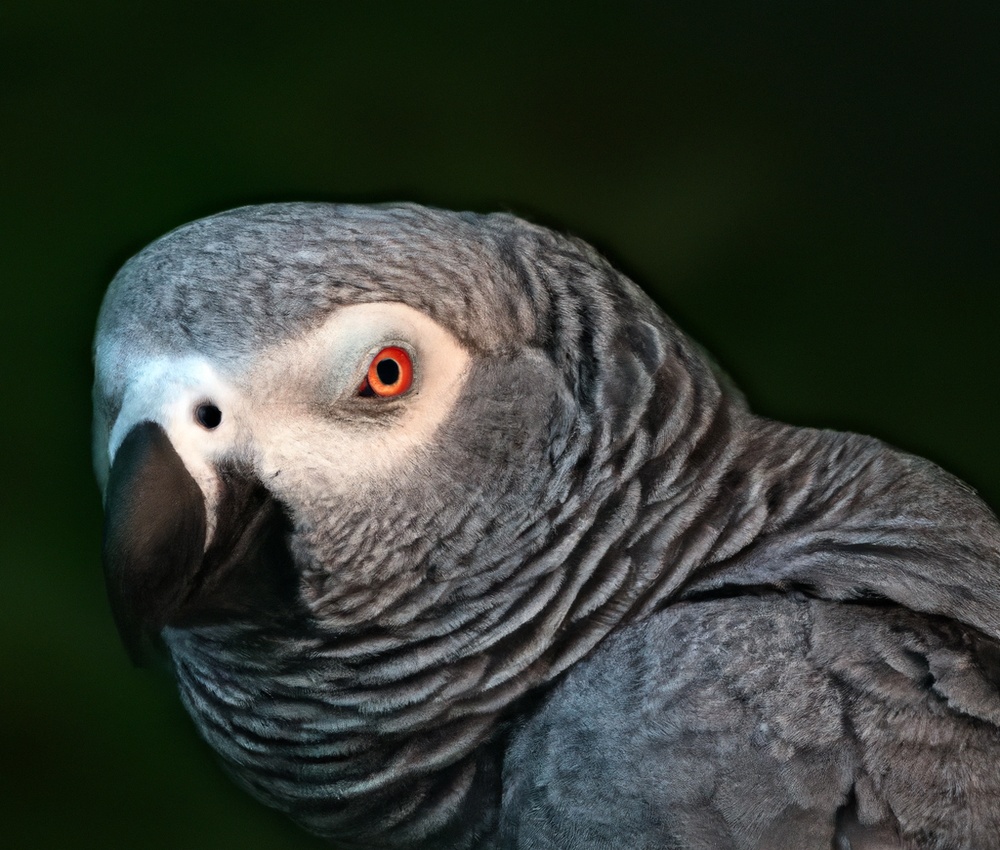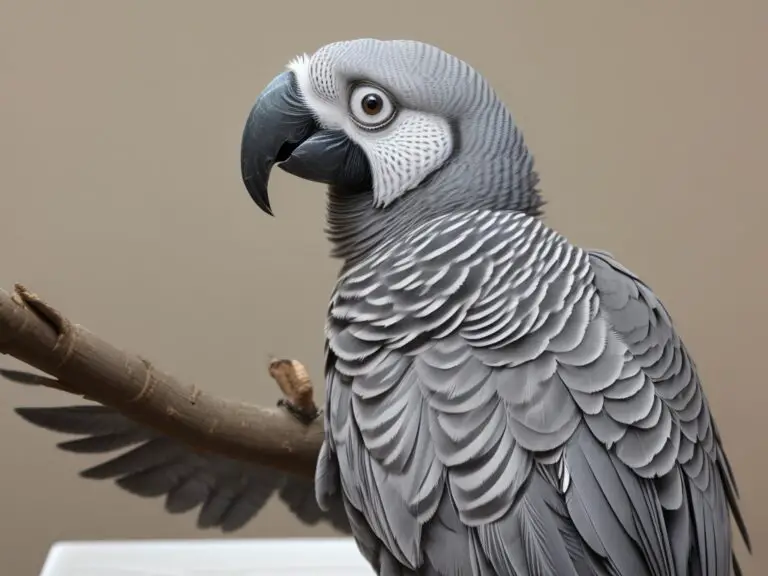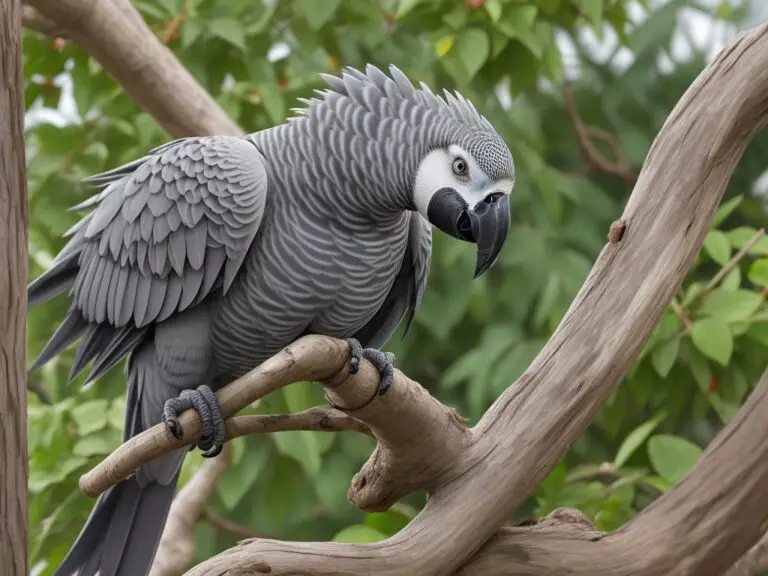How Can I Create a Stimulating Environment For My African Grey Parrot?
Key Takeaways:
- Provide plenty of mental stimulation through toys, puzzles, and foraging activities.
- Create a varied and enriching environment with a mix of perches, branches, and hiding spots.
- Incorporate regular social interaction and training sessions to keep your parrot engaged and entertained.
- Offer a balanced and nutritious diet to support your African Grey Parrot’s overall well-being.
Are you eager to create a thriving and engaging environment for your beloved African Grey Parrot?
Look no further! As a bird enthusiast with years of experience, I understand the importance of stimulating your parrot’s mind and ensuring their overall well-being.
In this article, I will guide you through the key factors to consider when setting up the perfect cage, providing mental stimulation, offering social interaction, creating a nutritious diet, and ensuring a safe environment.
Get ready to take your parrot’s happiness to new heights! But first, let’s dive into understanding the fascinating characteristics of African Grey Parrots.
| Aspect | Description |
| Enrichment Toys | Provide a variety of toys that encourage exploration, foraging, and problem-solving. Examples: puzzle toys, foraging toys, chewing toys, and wooden blocks. |
| Perches | Offer a range of perches with different textures, sizes, and materials, such as natural wood, rope, and cement. This helps exercise your African Grey’s feet and prevents foot problems. |
| Social Interaction | Spend quality time interacting with your parrot. African Greys need mental and social stimulation. Engage in activities like teaching new tricks, playing games, and providing attention and affection. |
| Environmental Variations | Create a changing environment by rotating toys and introducing new ones periodically. Rearrange perches and accessories to keep the living space interesting and mentally engaging. |
| Access to Outdoors | If possible, allow your African Grey supervised access to the outdoors in a secure and bird-friendly environment. Being exposed to natural sunlight, fresh air, and new sights and sounds can be enriching. |
| Variety of Foods | Offer a diverse diet that includes a mix of fruits, vegetables, seeds, nuts and fortified pellets. Provide a range of textures, flavors, and colors to stimulate the bird’s foraging instinct and offer nutritional variety. |
Understanding African Grey Parrots
African Grey Parrots have distinct characteristics that set them apart from other parrot species.
Characteristics of African Grey Parrots
African Grey Parrots are highly intelligent and known for their ability to mimic human speech with great accuracy.
They have a beautiful gray plumage and a distinctive red tail.
These parrots are also known for their strong bond with their owners and their sociable nature.
They thrive in an environment that provides mental stimulation, social interaction, and a nutritious diet.
Additionally, African Grey Parrots require a safe environment with minimal stress and consistent veterinary care.
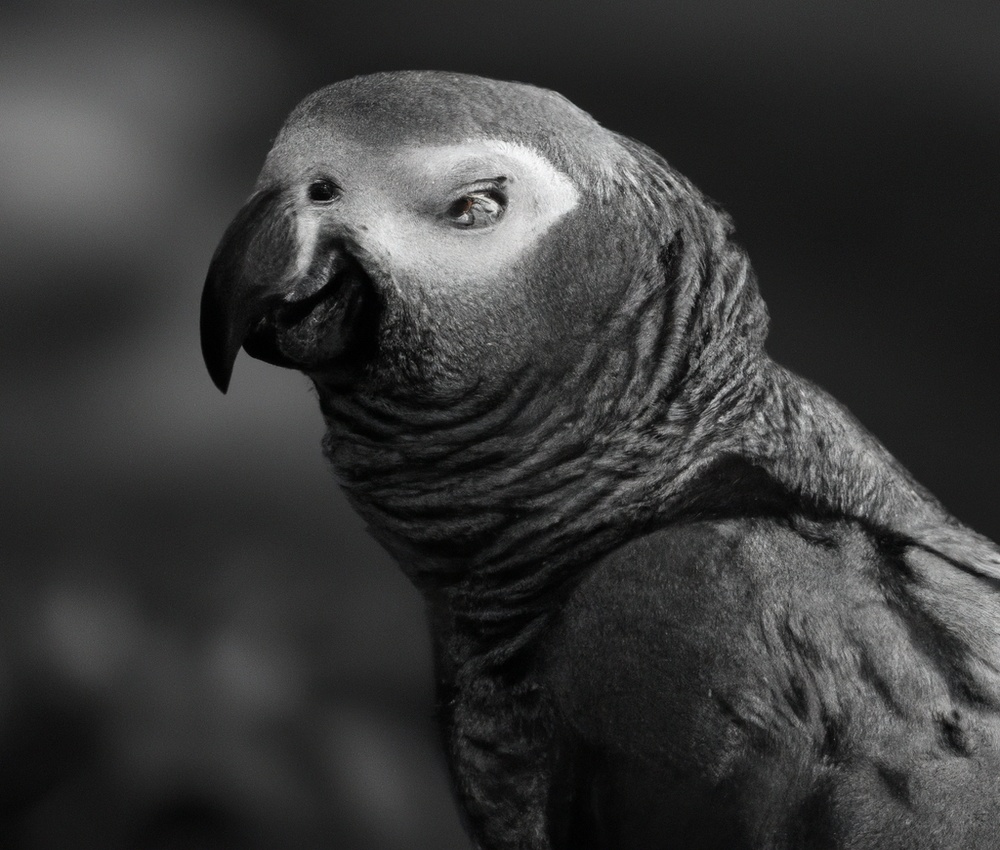
The Importance of a Stimulating Environment for African Grey Parrots
A stimulating environment is crucial for African Grey Parrots. It keeps them mentally and physically engaged, preventing boredom and behavioral issues.
Providing interactive toys, teaching tricks, and spending quality time together are essential.
A diverse diet, safe environment, and regular vet check-ups are also vital for their well-being.
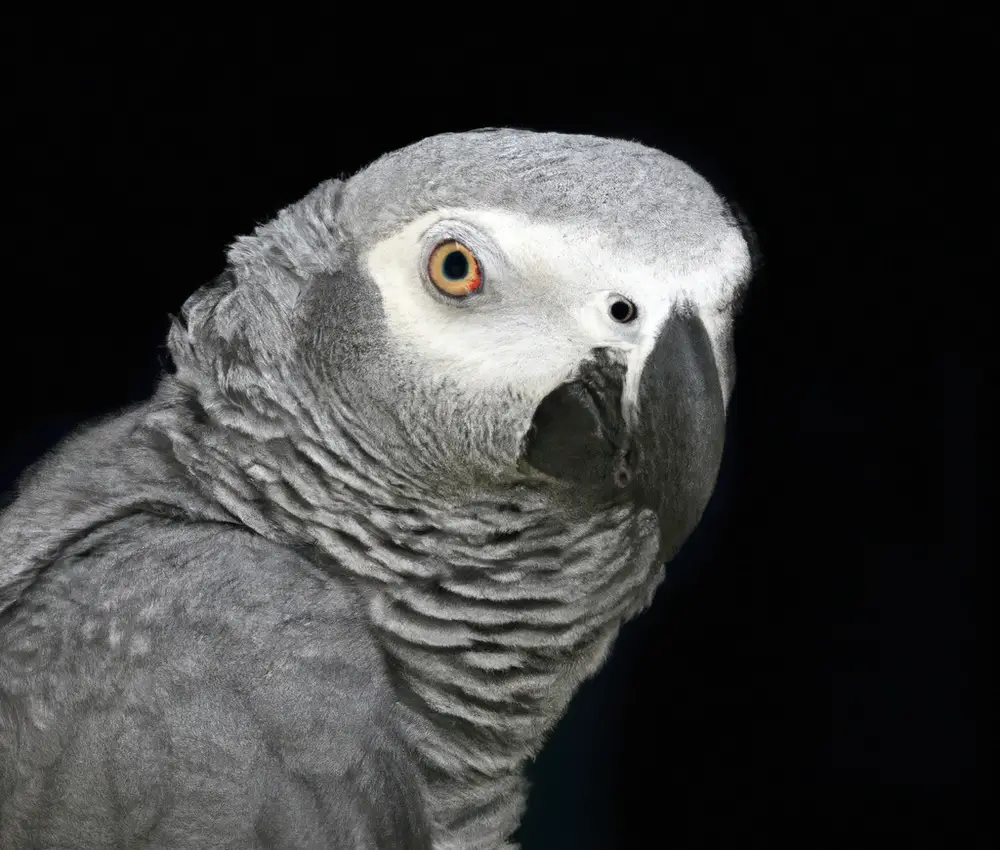
Common Challenges in Creating a Stimulating Environment
Creating a stimulating environment for African Grey Parrots can come with its challenges.
One common challenge is choosing the right cage.
It’s important to select a spacious cage that allows for physical movement and includes a variety of perches.
Cage placement is also crucial, as it should be in an area that allows for social interaction and provides a sense of security.
Additionally, providing mental stimulation can be a challenge.
Introducing interactive toys, puzzle toys, and training sessions can help keep your parrot engaged.
Offering social interaction can be another hurdle.
Spending quality time with your parrot, encouraging vocalization, and providing opportunities for interaction with other birds or animals can help address this challenge.
Finally, ensuring a nutritious diet and a safe environment are vital.
This includes understanding their dietary needs, offering a variety of fruits and vegetables, and eliminating toxic household items.
Regular veterinary care and health check-ups are also important to maintain their well-being.
Setting up the Perfect Cage
Setting up the perfect cage for your African Grey Parrot is essential for their well-being. Let’s take a look at some key factors to consider when setting up their cage.
Choosing the Right Cage for an African Grey Parrot
When choosing a cage for your African Grey Parrot, there are a few important factors to consider.
Opt for a cage that is spacious enough for your parrot to move around comfortably.
Make sure the bar spacing is appropriate to prevent escape or injury.
Look for a cage with a sturdy construction and a durable finish.
It should also have a removable tray for easy cleaning.
Provide enough perches and include some toys for mental stimulation.
Cage Placement and Accessibility
Ensure that the cage is placed in a quiet area of your home, away from drafts and direct sunlight. Additionally, consider the accessibility of the cage, making sure it is at a comfortable height and easily accessible for cleaning and interacting with your African Grey Parrot.
Providing perches and ladders inside the cage will enhance your parrot’s ability to move around and exercise.
Cage Size and Perch Options
For an African Grey Parrot, the cage size should be spacious enough for them to stretch their wings fully. A minimum cage size of 36x24x48 inches is recommended.
Bar spacing should be no larger than 3/4 inch to prevent escape.
Provide multiple perches of varying sizes and textures to promote foot exercise and prevent pressure sores. Avoid using sandpaper-covered perches as they can be rough on their feet.
Providing Mental Stimulation
To keep your African Grey Parrot mentally stimulated, try introducing interactive toys and playing with puzzle toys. Training and teaching new tricks can also provide mental stimulation.
Introducing Interactive Toys
Introducing interactive toys is a great way to keep your African Grey Parrot mentally stimulated.
Toys that require problem-solving, such as puzzle toys and foraging toys, are ideal.
You can also try introducing toys that encourage physical exercise, like ropes and swings.
Just make sure to rotate the toys regularly to keep your parrot engaged.
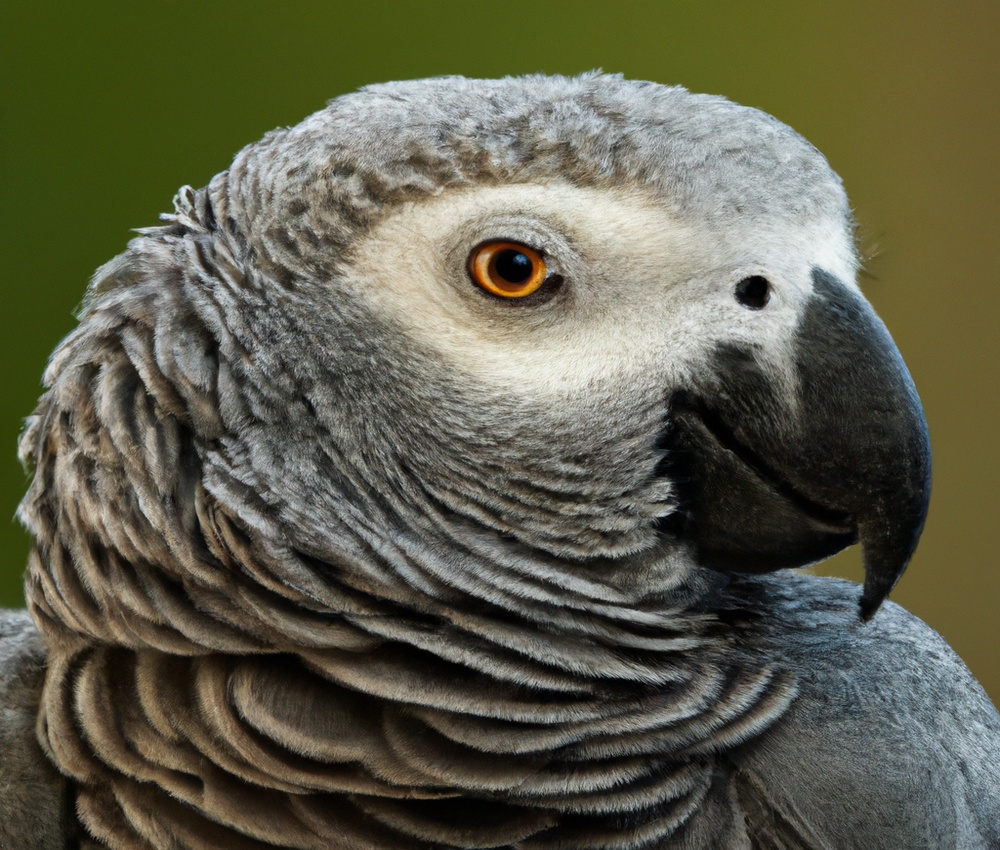
Playing with Puzzle Toys
Playing with puzzle toys is a great way to provide mental stimulation for your African Grey Parrot.
These toys challenge their intelligence and problem-solving skills.
Look for toys that require them to manipulate objects or solve puzzles to access treats or rewards.
This keeps them engaged and entertained for hours.
Additionally, puzzle toys can help prevent boredom and destructive behavior by keeping their minds occupied.
Just make sure to supervise your parrot while they play to ensure their safety.
Training and Teaching New Tricks
Training and teaching new tricks is a great way to provide mental stimulation for your African Grey Parrot. Start with simple commands like “step up” and reward with treats.
Gradually introduce more complex tricks like “wave” or “turn around” using positive reinforcement.
Patience and consistency are key!

Offering Social Interaction
To create a stimulating environment, offer social interaction to your African Grey Parrot.
Spending Quality Time with Your African Grey Parrot
To spend quality time with your African Grey Parrot, engage in interactive activities like playing games, training, and talking to them.
Offer plenty of attention and affection, regularly socialize with them, and provide mental stimulation through toys and puzzles.
Remember, bonding and interacting with your parrot helps build a strong and trusting relationship.
Encouraging Talking and Vocalization
To encourage talking and vocalization in your African Grey parrot, it’s important to create a stimulating environment.
Provide plenty of interactive toys and puzzle toys for mental stimulation.
Spend quality time with your parrot, talking and engaging with them.
Avoid using harsh or loud noises, as it can discourage vocalization.
Lastly, be patient and consistent in your efforts.
Interacting with Other Birds or Animals
Interacting with other birds or animals can provide your African Grey parrot with valuable socialization opportunities.
It’s important to introduce them slowly and carefully to prevent any potential conflicts.
Supervised playdates, bird-friendly events, or joining bird clubs can be great ways to facilitate social interaction for your parrot.
Just remember to prioritize your parrot’s safety and well-being throughout the process.
Creating a Nutritious Diet
To create a nutritious diet for your African Grey Parrot, understanding their dietary needs and incorporating a variety of fruits, vegetables, and ensuring proper hydration is essential.
Understanding the Dietary Needs of African Grey Parrots
Understanding the dietary needs of African Grey Parrots is essential for their overall health and well-being. These birds require a balanced diet consisting of a variety of foods.
Incorporating a combination of high-quality pellets, fresh fruits, vegetables, and limited amounts of seeds and nuts is crucial.
It is also important to ensure they have access to clean, fresh water at all times to ensure proper hydration.
Incorporating a Variety of Fruits and Vegetables
African Grey Parrots require a nutritious diet that includes a variety of fruits and vegetables.
Some fruits to include are apples, oranges, and bananas, while vegetables like carrots and broccoli can also be offered.
Aim to provide a mix of colors, textures, and flavors to keep your parrot interested and to ensure they are getting a balanced diet.
It’s important to wash the fruits and vegetables thoroughly to remove any pesticides or residues before offering them to your parrot.
Ensuring Proper Hydration
To ensure proper hydration for your African Grey Parrot, make sure to provide fresh water at all times. Clean the water dish daily and replace it with fresh water.
You can also offer water-rich fruits and vegetables like watermelon, cucumbers, and leafy greens.
Remember to monitor your parrot’s water intake and adjust accordingly.
Ensuring a Safe Environment
To ensure a safe environment for your African Grey Parrot, focus on eliminating toxic household items and minimizing stress and noise.
Regular veterinary care and health check-ups are also important for maintaining your parrot’s well-being.
Minimizing Stress and Noise
To minimize stress and noise for your African Grey Parrot, it’s important to create a calm and peaceful environment. Avoid loud noises, such as screaming or excessive music, as they can startle and stress your parrot.
Provide a designated quiet area for your parrot to retreat to when it needs some alone time.
Additionally, consider using white noise machines or calming music to help drown out loud noises from outside.
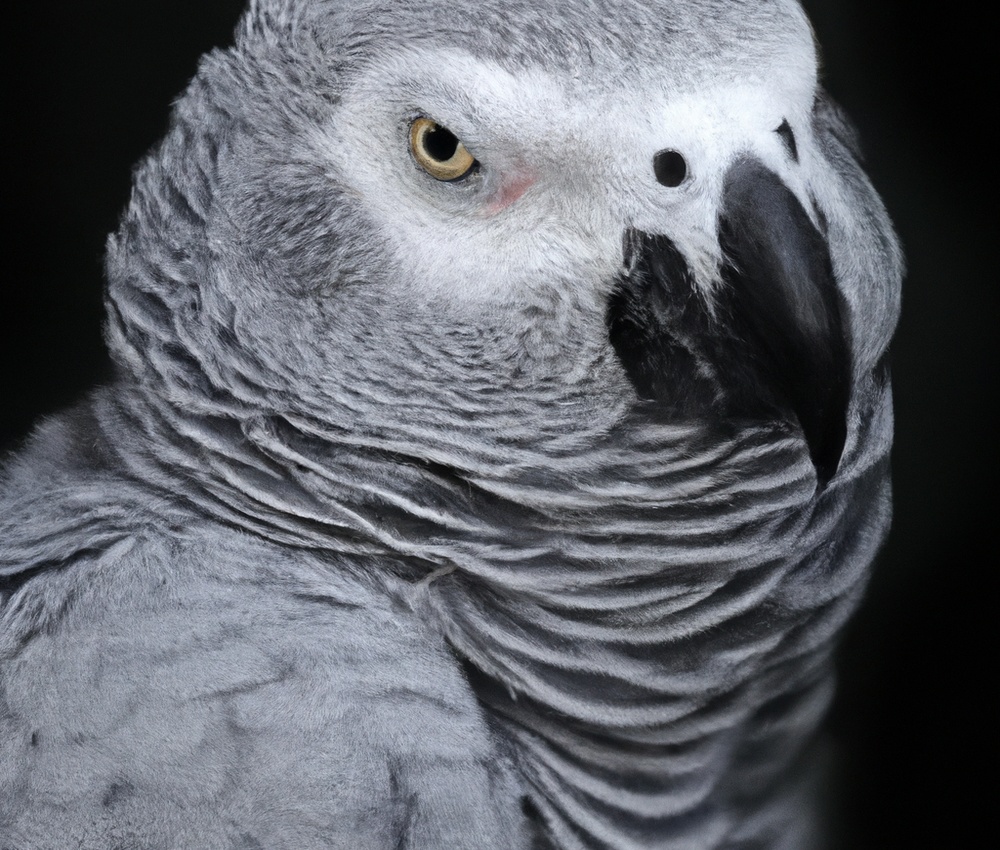
Consistent Veterinary Care and Health Check-ups
Consistent veterinary care and health check-ups are essential for the well-being of your African Grey parrot. Schedule regular visits with an avian veterinarian who specializes in exotic birds.
During these check-ups, the vet will assess your parrot’s overall health, check for any signs of illness or disease, and provide necessary vaccinations.
They can also offer guidance on nutrition, behavior, and general care. Routine check-ups help identify any potential health issues early on, ensuring prompt treatment and a healthier, happier parrot.
Frequently Asked Questions
How much time should I spend with my African Grey parrot?
It is important to spend a significant amount of time with your African Grey parrot to meet its social and cognitive needs.
Aim for at least 2-4 hours of direct interaction and attention each day.
This includes activities like talking, playing, training, and providing mental stimulation.
Remember, a well-socialized and mentally stimulated parrot will lead to a happier and healthier companion.
Can I keep my African Grey parrot in an outdoor aviary?
No, keeping an African Grey parrot in an outdoor aviary is not recommended.
African Grey parrots are sensitive to temperature and humidity changes, and they are susceptible to stress and disease when exposed to outdoor elements.
It is best to provide them with a safe and stimulating environment indoors.
What should I do if my African Grey parrot shows signs of boredom?
If your African Grey parrot shows signs of boredom, it’s important to address it promptly.
Here’s what you can do:
- Provide new toys and rotate them regularly to keep things interesting.
- Offer puzzle toys that stimulate their problem-solving skills.
- Spend quality time interacting with your parrot through training, talking, and playing games.
- Create an enriched environment with perches, swings, and hiding spots.
- Consider introducing your parrot to other birds or animals for social interaction. Remember, a happy and stimulated parrot is a healthy parrot!
How can I prevent hormonal or aggressive behavior in my African Grey parrot?
Preventing hormonal or aggressive behavior in your African Grey parrot is important for their well-being.
Here are some tips to help:
- Provide a balanced diet: Ensure your parrot’s diet includes a variety of fresh fruits, vegetables, and high-quality pellets. Avoid feeding them high-fat or sugary foods, as it can contribute to hormonal behavior.
- Limit breeding triggers: Avoid activities that can stimulate breeding behavior, such as excessive petting or providing nesting materials. Creating a consistent routine can help reduce hormonal behaviors.
- Avoid excessive attention: While it’s important to spend quality time with your parrot, giving too much attention can reinforce aggressive behaviors. Set boundaries and provide a suitable amount of social interaction.
- Socialize your parrot: Regularly expose your parrot to different environments, people, and other animals (if safe. Positive exposure helps prevent territorial behavior and promotes socialization.
- Training and positive reinforcement: Teach your parrot basic commands and tricks using positive reinforcement techniques. This helps redirect their focus and provides mental stimulation.
- Enrich their environment: Provide a stimulating environment with plenty of toys, puzzles, and activities. Regularly rotate toys to keep your parrot engaged and prevent boredom.
Remember, each parrot is unique, so it may take time and patience to address hormonal or aggressive behavior.
Consistency and positive reinforcement are key.
What are some common health issues seen in African Grey parrots?
Some common health issues seen in African Grey parrots include respiratory infections, feather plucking, psittacosis (parrot fever), beak and feather disease, and nutritional deficiencies.
Regular veterinary check-ups and a well-balanced diet can help prevent and address these health concerns.
Final Verdict
Creating a stimulating environment for your African Grey Parrot is essential for their overall well-being.
By choosing the right cage, providing mental stimulation through interactive toys and training, offering social interaction, ensuring a nutritious diet, and maintaining a safe environment, you can enhance their mental and physical health.
Remember that spending quality time with your parrot, encouraging vocalization, and seeking veterinary care are crucial for their happiness.
By following these guidelines, you can create a stimulating environment that will keep your African Grey Parrot happy, healthy, and thriving for years to come.

